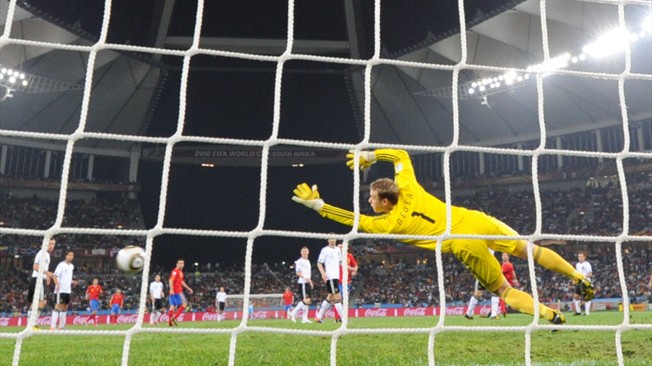Vivek Kaul
It is in the last week of March 2014 that I am writing this piece. The stock market in India is flirting with all time high levels. At the same time in the T20 cricket World Cup that is on, Yuvraj Singh’s bad form with the bat continues (as I write India has played two matches, and in both, Yuvraj has failed with the bat).
Despite the fact that the stock market is flirting with all time high levels, there are still a lot of investors who are holding onto stocks they had bought at the peak levels reached in 2008. Real estate and infrastructure stocks were a favourite among investors back then.
Once the stock market started to crash in 2008, these stocks crashed big time. They still are nowhere near the high levels they had achieved way back in 2008. And more than that, the prospects for these sectors(particularly real estate) in India, are not looking good either. Nevertheless, there are still some investors who have held onto these stocks bought in 2008, in the hope that these stocks will make money for them one day. So what is happening here? Barry Schwartz explains this in his book The Paradox of Choice. As he writes “People hold on to stocks that have decreased in value because selling them would turn the investment into a loss. What should matter in decisions about holding or selling stocks is only your assessment of future performance and not (tax considerations aside) the price at which the stocks were purchased.”
But the price at which the stock is bought does turn out to matter. This fallacy is referred to as the sunk-cost fallacy by behavioural economists.
And what about Yuvraj Singh? What is he doing here? Vijay Mallya owned IPL Royal Challengers Bangalore bought him for a mind-boggling Rs 14 crore in a recent auction in the Indian Premier League(IPL). The tournament starts in mid April, right after the T20 World Cup ends. From the way things currently are, Yuvraj doesn’t look in great form. But despite that he is likely to be played by Royal Challengers Bangalore in all the matches that they play.
And why is that? Simply because the sunk-cost fallacy will be at work. The Royal Challengers Bangalore have paid so much money to buy Yuvraj that they are likely to keep playing him in the hope that he will eventually start scoring runs. Schwartz discusses this in the context of professional basket ball players in the United States. “According to the same logic of sunk costs, professional basketball coaches give more playing time to players earning higher salaries independent of their current level of performance,” he writes.
The sunk-cost fallacy is a part of our everyday lives as well. Many of us make instinctive expensive purchases and then don’t use the product, due to various reasons. At the same time, we don’t get rid of the product either, in the hope of using it in some way in the future.
Richard Thaler, a pioneer in the field of Behavioural Economics, explains this beautifully through a thought experiment, in a research paper titled Mental Accounting Matters. “Suppose you buy a pair of shoes. They feel perfectly comfortable in the store, but the first day you wear them they hurt. A few days later you try them again, but they hurt even more than the first time. What happens now? My predictions are: (1) The more you paid for the shoes, the more times you will try to wear them. (This choice may be rational, especially if they have to be replaced with another expensive pair.) (2) Eventually you stop wearing the shoes, but you do not throw them away. The more you paid for the shoes, the longer they sit in the back of your closet before you throw them away. (This behaviour cannot be rational unless expensive shoes take up less space.) (3) At some point, you throw the shoes away, regardless of what they cost, the payment having been fully `depreciated’.”
Along similar lines people hold on to CDs they never listen to, clothes they never wear and books they never read. Keeping these things just holds up space, it doesn’t create any problems in life. But there are other times when the escalation of commitment that the sunk-cost fallacy causes, can lead to serious problems. As Daniel Kahneman, writes in Thinking, Fast and Slow “The sunk cost fallacy keeps people for too long in poor jobs, unhappy marriages, and unpromising research projects. I have often observed young scientists struggling to salvage a doomed project when they would be better advised to drop it and start new one.”
As far trying to salvage doomed projects go, CEOs and businesses seem to do it all the time. As Kahneman points out “Imagine a company that has already spent $50 million on a project. The project is now behind schedule and the forecasts of its ultimate returns are less favourable than at the initial planning stage. An additional investment of $60 million is required to give the project a chance. An alternative proposal is to invest the same amount in a new project that looks likely to bring higher returns. What will the company do? All too often a company afflicted by sunk costs drives into the blizzard, throwing good money after bad rather than accepting the humiliation of closing the account of a costly failure.”
A similar problem afflicts a lot of government infrastructure projects as well, where good money keeps getting thrown after bad. It also explains why the United States kept waging a war in Vietnam and then in Iraq, even though it was clear very early in the process that Vietnam was a lost cause and that there were no weapons of mass destruction in Iraq.
To conclude, it is important to understand why human beings become victims of the sunk-cost fallacy? “Sunk-cost effects are motivated by the desire to avoid regret rather than just the desire to avoid a loss,” writes Schwartz. And if you, dear reader, do not want to become a victim of the sunk-cost fallacy, this is an important point to remember.
The article originally appeared in the April2014 issue of the Wealth Insight magazine.
(Vivek Kaul is the author of the Easy Money trilogy. He can be reached at [email protected])



![scott adams[1]](http://teekhapan.files.wordpress.com/2014/02/scott-adams1.jpg?w=224&resize=224%2C300)
